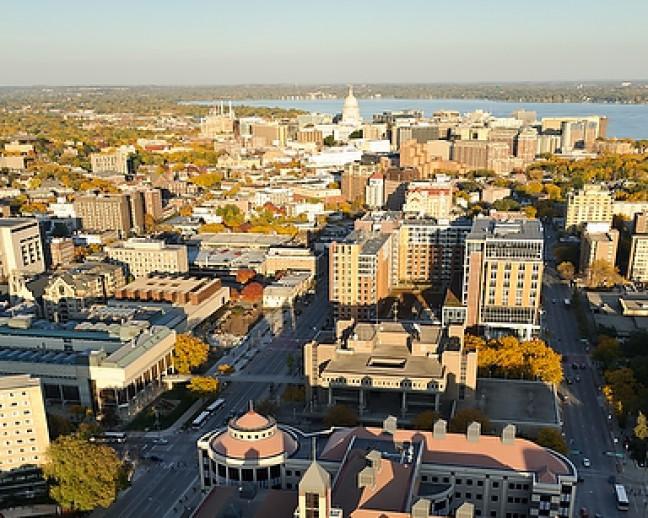Keeping future needs of University of Wisconsin in mind, creators of the 2015 Campus Master Plan preliminary draft outlined the possible expansion of green infrastructure and research and transportation facilities across campus in a public open house Wednesday.
Gary Brown, director of campus planning and landscape architecture, said the plan would outline the maximum potential for campus development over the next several years. He said the plan would also highlight ways to improve the campus’ research, landscape and transportation infrastructure.
Mary Jukuri, landscape architect with Smith Group JJR, said the master plan’s goals were to support UW’s mission, manage its resources, make traveling around campus easier, celebrate the lakeside setting, revitalize outdoor spaces and make the campus a “good neighbor” to surrounding areas.
The 2015 Campus Master Plan would increase capacity by 400,000 to 600,000 square feet since the 2005 plan, Jukuri said. Since the 2005 plan was implemented, UW has built upon approximately 35 percent of the proposed 3.7 million gross square feet capacity of campus. Capacity would be 4.3 million gross square feet in the 2015 plan, she said.
“University of Wisconsin-Madison’s campus is such a unique campus … with so many wonderful and iconic landscapes across the campus,” Jukuri said. “What we are hoping to do is extend that same level of quality and character of landscape space to other parts of campus that perhaps haven’t matured enough yet.”
Jukuri said the 2015 Campus Master Plan would mostly change south campus, which would see most development in engineering research and academic facilities. Wendt library is also scheduled to be relocated, but she said this would be fulfilled in the long run.
Other research facilities would be expanded up to 150,000 ground square feet on campus, Jukuri said.
There are slight changes expected for near west and west areas on campus while the central area is expected to stay the same, Jukuri said. Some of the changes that are expected to take place over the next 30 to 40 years include creating more athletic facilities, parking structures and pedestrian and cycling tracks.
Stan Szwalek, landscape architect with Hoerr Schaudt Landscape Architects, said the 2015 Campus Master Plan aims to also promote green infrastructure across UW. It would add more plant life around campus and increase storm water treatment and management amenities, he said.
“[Goals for the landscape plan] are to protect and enhance open spaces on campus, create new gathering space, maintain the lands and lakeshore nature preserve, enhance cultural historic landscapes on campus and establish open space designing guidelines,” Szwalek said.
Kevin White, transportation planner with Kimley-Horn, said one of the main goals of the plan is to improve service and efficiency of transit facilities and emphasize walking and biking on campus.
White said improving and increasing parking facilities on campus is another goal. Currently, faculty, students and visitors are demanding as many as 24,000 parking spaces.
Brown said the team behind the plan has been working with campus groups such as Associated Students of Madison and other shared governance groups.
“It is very important we have the public comment like this and we try to reach out and get people to come and talk about plan,” Brown said.
The public open house for the revised preliminary Campus Master Plan will be held April 13 and the plan will be finalized over summer 2016.


